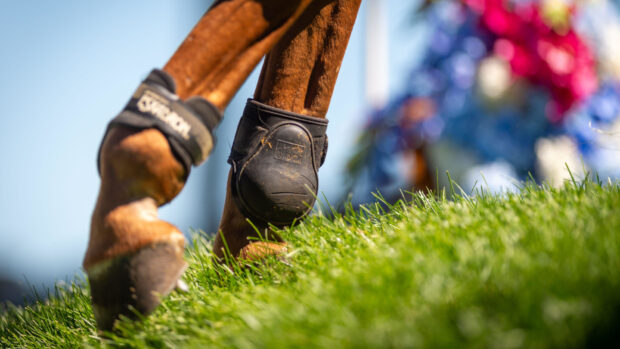From team chasing and showjumping to hacking and schooling, the use of bitless bridles is increasing. However, if you’ve only ever ridden horse in a bit, it can feel daunting to go without. We speak to Wendy Wainwright of the World Bitless Association for her advice on going bitless.
Types of bitless bridle
Bitless bridles take many forms, distributing pressure in varying places around a horse’s head. It’s often a case of trial and error to find a bitless bridle that suits you and your horse. Wendy Wainwright of the World Bitless Association explains that: “the different kinds of bitless bridles are defined by how they act upon the horse’s head. They vary from the mild to the very severe, and can act upon one or more of the following: nose, jaw, curb, cheek or poll.” Within this, different bridles can exert pressure either directly, with or without leverage, or indirectly using cross or running straps.
The World Bitless Association has a comprehensive guide for those looking for more information about the different kinds of bitless bridles available. However, the main variations tend to sit in the following categories:
• Cross-under
• Hackamore
• Bosal
• Halter
• Side-pull
Benefits of bitless bridles
There are many reasons behind trying a bitless bridle. Some horses need a bitless bridle due to physical issues in the mouth, from broken jaws and melanomas to tongue damage. Ridden behaviours like head shaking, spookiness, bucking, bolting, head nodding and excessive salivation also lead to riders exploring bitless options.
In addition to physical and behavioural issues, Wendy explains there’s a “growing paradigm shift” occurring in the equestrian world. There’s “a shift away from the traditional ways of the last 60-70 years of horse-keeping, to a more natural and enriching environment, to positive and science-based training methods.” Part of this, Wendy explains, is that more people “are questioning what has previously been accepted — and use of bits is a part of that.”
Bitless bridles have been observed to solve a number of issues, from head shaking and bridle lameness to napping, rearing and anxiety. Dr Cook’s Fear of the Bit publication shows in the detail the types of issues found and overcome — or at least improved — by using bitless bridles.
What to consider before going bitless
There are a great many positives to be found in going bitless. Wendy describes how the horses she’s worked with bitless “are often calmer, less anxious and spooky than bitted horses” and they “often move freer and more expressively”.
However, it’s key to remember that changing bridles and going bitless won’t solve all your problems.
“Bitless will never cover up poor training and riding, and will often uncover weaknesses that have previously been hidden by the bit,” Wendy states. She adds that: “some riders might think they are going backwards when going bitless.” So, if you try bitless and you don’t instantly succeed, don’t panic. Put more time into your training and addressing the areas you and your horse struggle with.
How to introduce your horse to a bitless bridle
Wendy suggests:
• Introducing your horse to a bitless bridle in an enclosed space
• Including a period of groundwork to gauge understanding and response before riding
• Try long-reining, as it’s an excellent introduction (in-hand work is also useful)
• Use flexing to the left and right in-hand to introduce the feel of the bridle
• Follow this up with transitions and circles either in-hand or long-reining
• Help your horse understand how the bridle feels by using transitions in slow paces, circles and serpentines
What horses do bitless bridles suit?
All horses can go bitless, as long as the correct training is done and the right bridle is found. As Wendy explains: “for some horses, the feel of a bitless bridle is very different from what they are used to, so it can take some time for them to understand and adjust to it.”
Finding a great trainer who understands the training process is key to achieving success in a bitless bridle.
You might also be interested in:

8 bitless bridles to consider if you’re thinking of making the switch

The Micklem bridle: what you need to know

13 anatomical bridles to ensure maximum comfort

Subscribe to Horse & Hound magazine today – and enjoy unlimited website access all year round
Horse & Hound magazine, out every Thursday, is packed with all the latest news and reports, as well as interviews, specials, nostalgia, vet and training advice. Find how you can enjoy the magazine delivered to your door every week, plus options to upgrade your subscription to access our online service that brings you breaking news and reports as well as other benefits.



